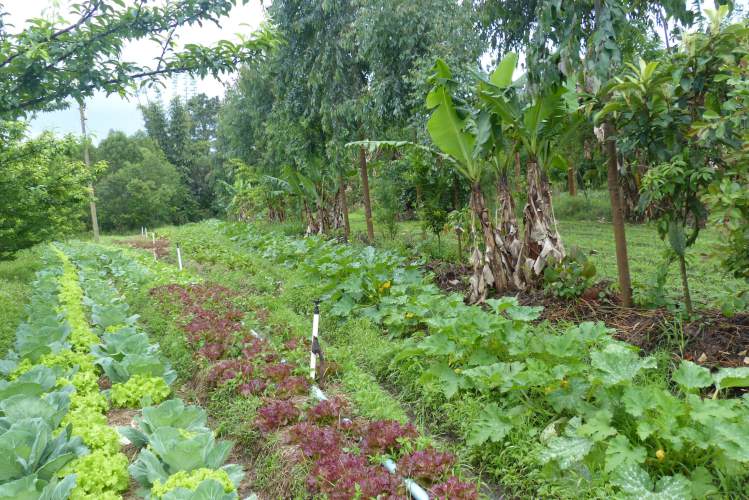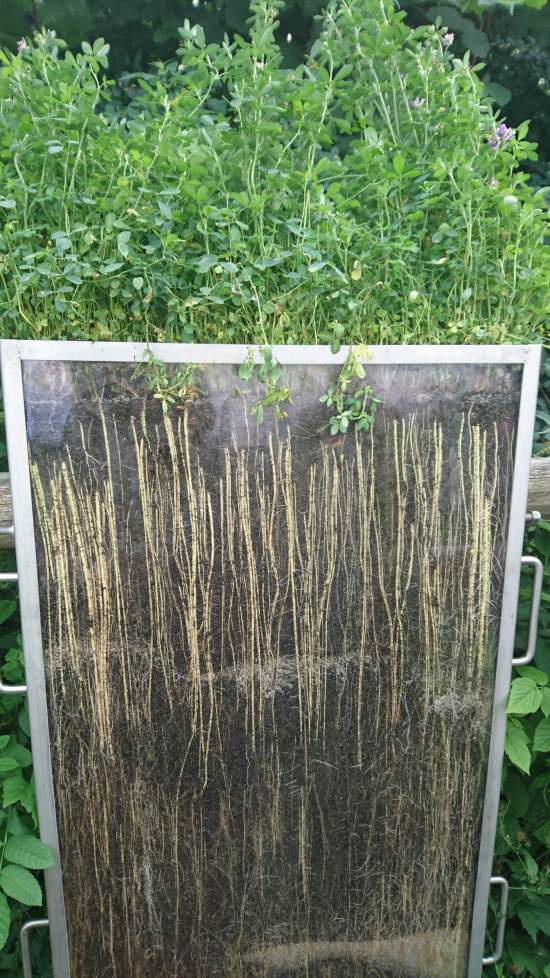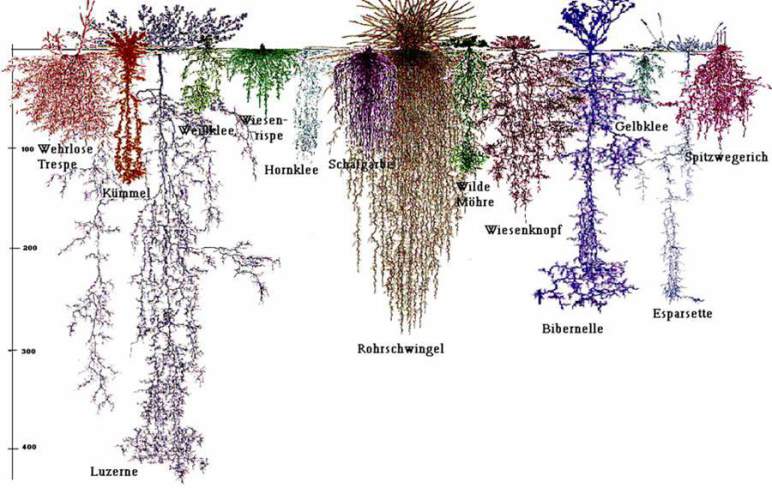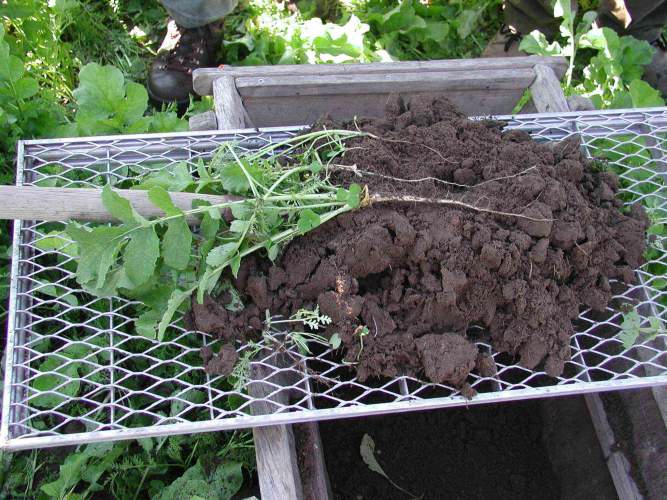Plant & Root Diversity
The more research in the field of soil progresses, the more it becomes clear that the supply of organic material and biodiversity in the agroecosystem – and thus also in the soil – through the management of crop rotation and catch crops has a much higher potential for promoting soil life and thus a healthy soil structure than technical solutions. Agroecological measures always prove to be clearly superior to purely technical ones. Roots provide important fodder for soil organisms and build structure, directly and through the exchange of substances with soil life.
Intercropping has very different effects on the soil. Stake roots hardly loosen the soil and leave a large part of the soil volume without nutrients, while plant mixtures – grown frequently enough – feed the soil life intensively and can even replace tillage. Mixed crops, crop rotations with undersowing, permaculture and agroforestry systems have much more effect.
Soil life is promoted, humus is built up and the landscape water balance is positively influenced.
This is one of the reasons why Brandenburg is the first federal state in Germany to establish support structures for agroforestry within the framework of the CAP. The EU had already created this possibility from 2013.
*Offer: Diversity promotes soil fertility and climate resilience – lecture or seminar
Offer: Organic farming – what next? The advantages of permaculture and agroforestry systems – lecture or seminar.
Read more why diversity is the solution to our soil problems…
Beste, A. (2022): GREENWASHING & HIGH TECH – Faking it: (un-)sustainable solutions for agriculture.
Beste, A. (2019): Comparing Organic, Agroecological and Regenerative Farming.
Beste, A. (2018): #SoilMatters… On humus, soil structures & the limits of no-till. Auf ARC2020



